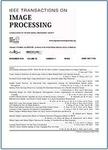版权所有:内蒙古大学图书馆 技术提供:维普资讯• 智图
内蒙古自治区呼和浩特市赛罕区大学西街235号 邮编: 010021

作者机构:Univ Sci & Technol China Sch Informat Sci & Technol Hefei 230027 Peoples R China Univ Sci & Technol China Deep Space Explorat Lab Hefei 230027 Peoples R China
出 版 物:《IEEE TRANSACTIONS ON IMAGE PROCESSING》 (IEEE Trans Image Process)
年 卷 期:2025年第34卷
页 面:247-262页
核心收录:
学科分类:0808[工学-电气工程] 08[工学] 0812[工学-计算机科学与技术(可授工学、理学学位)]
基 金:National Defense Basic Scientific Research program [JCKY2022911B002]
主 题:Point cloud compression Semantics Feature extraction Three-dimensional displays Representation learning Solid modeling Prototypes Shape Nearest neighbor methods Image reconstruction Self-supervised point cloud representation learning optimal transport and part modeling
摘 要:Self-supervised point cloud representation learning aims to acquire robust and general feature representations from unlabeled data. Recently, masked point modeling-based methods have shown significant performance improvements for point cloud understanding, yet these methods rely on overlapping grouping strategies (k-nearest neighbor algorithm) resulting in early leakage of structural information of mask groups, and overlook the semantic modeling of object components resulting in parts with the same semantics having obvious feature differences due to position differences. In this work, we rethink grouping strategies and pretext tasks that are more suitable for self-supervised point cloud representation learning and propose a novel hierarchical masked representation learning method, including an optimal transport-based hierarchical grouping strategy, a prototype-based part modeling module, and a hierarchical attention encoder. The proposed method enjoys several merits. First, the proposed grouping strategy partitions the point cloud into non-overlapping groups, eliminating the early leakage of structural information in the masked groups. Second, the proposed prototype-based part modeling module dynamically models different object components, ensuring feature consistency on parts with the same semantics. Extensive experiments on four downstream tasks demonstrate that our method surpasses state-of-the-art 3D representation learning methods. Furthermore, Comprehensive ablation studies and visualizations demonstrate the effectiveness of the proposed modules.